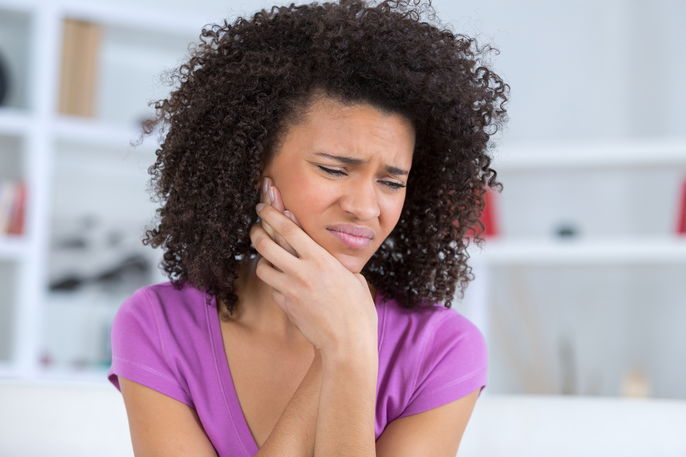A dislocated jaw is when the rounded part of the jawbone (the condyle) moves out of place and becomes locked in an abnormal position due to a separation of bones that meet in the jaw joint, the TMJ (temperomandibular joint). This can lead to symptoms such as TMJ pain and discomfort, stiffening of the jaw, difficulty speaking and difficulty opening or closing the mouth.
A dislocated jaw can occur after opening the mouth too wide and past its limits, which can happen after yawning, during a dental procedure, or if there is a preexisting TMJ condition. When the jaw becomes dislocated, it does not return to its normal position on its own. This requires immediate medical attention, as you should not attempt to reposition it at home.
Treatment for a dislocated jaw consists of using a technique called manual reduction to reposition the jaw in its correct position. This should only be performed by a doctor. In more severe cases, surgery may be necessary to reposition the jaw.

Main symptoms
The main symptoms of a dislocated jaw are:
- Intense facial pain, in the jaw area
- Facial discomfort and increased facial sensitivity
- Stiff muscles in the jaw region
- Difficulty speaking
- Inability to open or close the mouth
- Visible deformity of the jaw to one side, which can give the sensation that the teeth are misaligned.
It is important to proceed to the nearest emergency room if you experience these symptoms, as the jaw should be assessed and treated as needed.
Possible causes
Jaw dislocation can occur when the TMJ moves out of place. This can happen due to injuries and direct blows to the face, or if the mouth is opened wide past its limits when yawning, vomiting or during a dental procedure, for example.
A dislocated jaw can also occur in people who have malformed jaw bones, or preexisting TMJ conditions. It can also occur in those with hypermobility syndrome, which is a condition in which the ligaments and joints throughout the body are looser than normal.
Dislocation is also more likely to occur in people who have had previous dislocations.
Treatment options
In the event of a dislocated jaw, it is important to keep the jaw as still as possible by gently holding it with your hand. It can also be supported by a cloth, which should be placed under the jaw and wrapped over the top of the head. You should not try to reposition the jaw on your own or at home, and should proceed to the nearest emergency room.
At the hospital, the doctor will perform a physical examination. He or she may opt to order imaging tests, such as an X-ray, CT scan and/or MRI to confirm if any fractures are present, and to help guide the most appropriate treatment.
In some cases, the jaw can return to its place without the need for treatment.
However, if this does not happen, it may be necessary to have a dentist or orthopedic surgeon to put the jaw back into its position using manual reduction. This is done by placing the thumbs under the sides of the jaw bone and the fingers under the chin. While pulling the lateral jaw down with the thumbs, a firm force is applied to the chin with the fingers, and then a backward force is applied to place the dislocated side back into its position. This technique requires thorough knowledge of facial anatomy and bone locations, which is why it should be performed by a trained professional.
Once the jaw is back in place, the doctor may apply a bandage to limit the movement of the jaw and prevent another dislocation. You should avoid opening your mouth too wide for at least 6 weeks, and avoid eating hard foods that require a lot of chewing, such as meat, carrots or toast. Instead you should opt for soft foods such as soups and porridge.
If jaw dislocation is experienced frequently, surgical interventions may be necessary to fix the condyle with surgical wires in order to prevent the temporomandibular joint from locking again, and to reduce the risk of future dislocations.
Prevention measures
It is not always possible to prevent the jaw from dislocating, however some measures to prevent it are the use of a mouth guard, helmet or any other equipment that protects the face during contact sports.
Avoiding biting into very large and hard foods and being careful when opening your mouth when yawning are also important considerations that can help prevent dislocation.






























